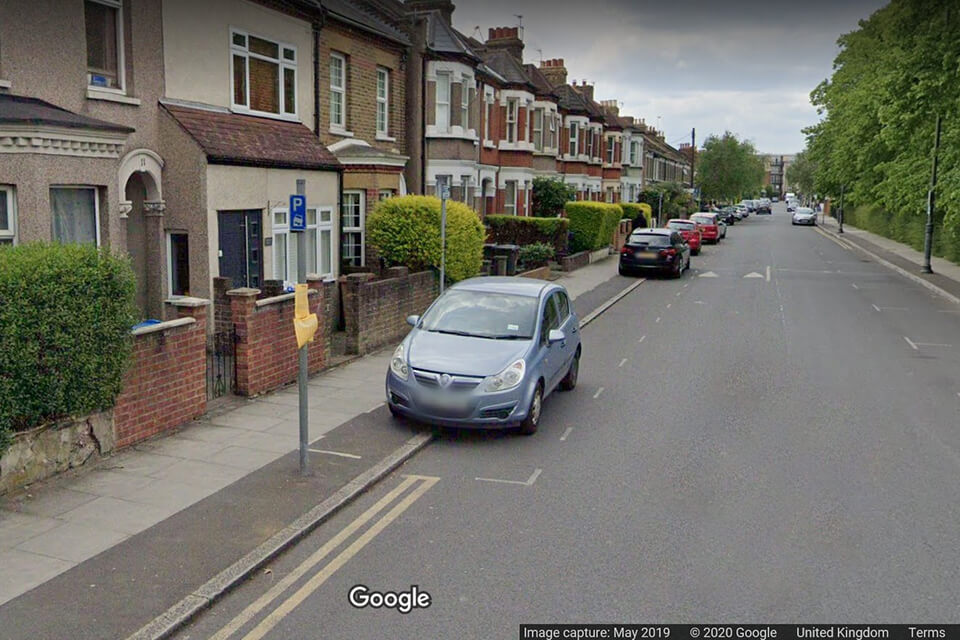Although the ‘pavement’ is defined as the ‘footway’ in legislation, the more commonly used term ‘pavement’ is used in this document to mean the part of a highway which shares its border with the carriageway (‘road’) on which there is a public right of way on foot. This is distinct from a ‘footpath’, which does not border a road.
Many towns and cities were not designed to accommodate today’s high traffic levels; and at some locations, especially in residential areas with narrow roads and no driveways, the pavement is the only place to park without obstructing the carriageway. However, irrespective of whether pavement parking is deemed necessary, there are inherent dangers for all pedestrians; being forced onto the carriageway and into the flow of traffic. This is particularly difficult for people with sight or mobility impairments, and those with prams or buggies. While resulting damage to the pavement and verges is, uppermost, a trip hazard, maintenance and personal injury claims are also a cost to local authorities.
Since 1974, parking on pavements, with certain exceptions, has been prohibited in Greater London by the Greater London Council (General Powers) Act 1974. Exemptions at specific locations can be permitted through an administrative resolution and indicated by traffic signs. A national prohibition was enacted in Scotland in November 2019 but has yet to come into force. The reverse applies elsewhere in England, where parking on pavements and verges is permitted unless specifically prohibited by a local authority (either street-by-street or zonally); the prohibition requiring a formal Traffic Regulation Order (TRO). The DfT is currently running a project looking at how the TRO legislative framework can be improved, to make TROs easier to implement, including for pavement parking.
As part of its wider agenda to improve accessible transport, the DfT’s commitment to review the laws on pavement parking was featured in its Inclusive Transport Strategy and Cycling and Walking Investment Strategy safety review. Last year, the DfT completed an exercise to gather evidence on the problems pavement parking causes, the effectiveness of current legislation, and the case for reform.
To further develop its understanding of the pavement parking problem, the DfT is seeking your views on:
- whether its ongoing work (Option 1), explained in more detail below, to improve the TRO process, under which local authorities can already prohibit pavement parking, is sufficient and proportionate to tackle pavement parking where it is a problem; or if not:
- which of 2 specific options you prefer. These were identified in the department’s review of the pavement parking problem, and echoed by the Transport Committee; are aimed at providing better tools for local authorities. These options, explained in more detail in this consultation document, are:
- legislative change to allow local authorities with civil parking enforcement (CPE) powers to enforce against ‘unnecessary obstruction of the pavement’ (Option 2), or:
- legislative change to introduce a London-style pavement parking prohibition throughout England (Option 3).
- any alternative proposals you may have for managing pavement parking
The DfT recognises that there are pros and cons for each of the options, and your responses on each will inform how this issue should be addressed.
How to respond
The consultation period began on 31 August 2020 and will run until 22 November 2020 so ensure that your response reaches us before the closing date. If you would like alternative formats (Braille, audio CD, and so on), contact pavement.parking@dft.gov.uk.
You may respond via:
- the online survey, our preferred method
- by downloading the response form and emailing pavement.parking@dft.gov.uk
- emailing pavement.parking@dft.gov.uk directly
Due to remote working for the foreseeable future, we cannot accept hard copies of responses but please let us know if you are unable to respond by using the survey or by email.
When responding, state whether you are responding as an individual or representing the views of an organisation. If responding on behalf of a larger organisation, make it clear who the organisation represents and, where applicable, how the views of members were assembled.






Recent Comments